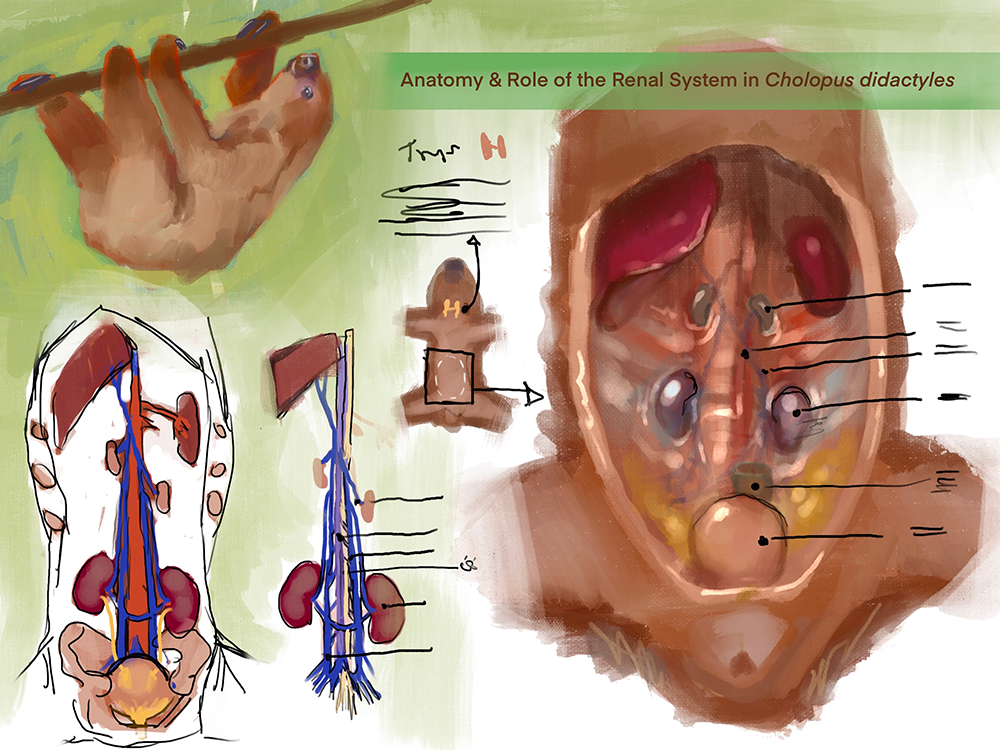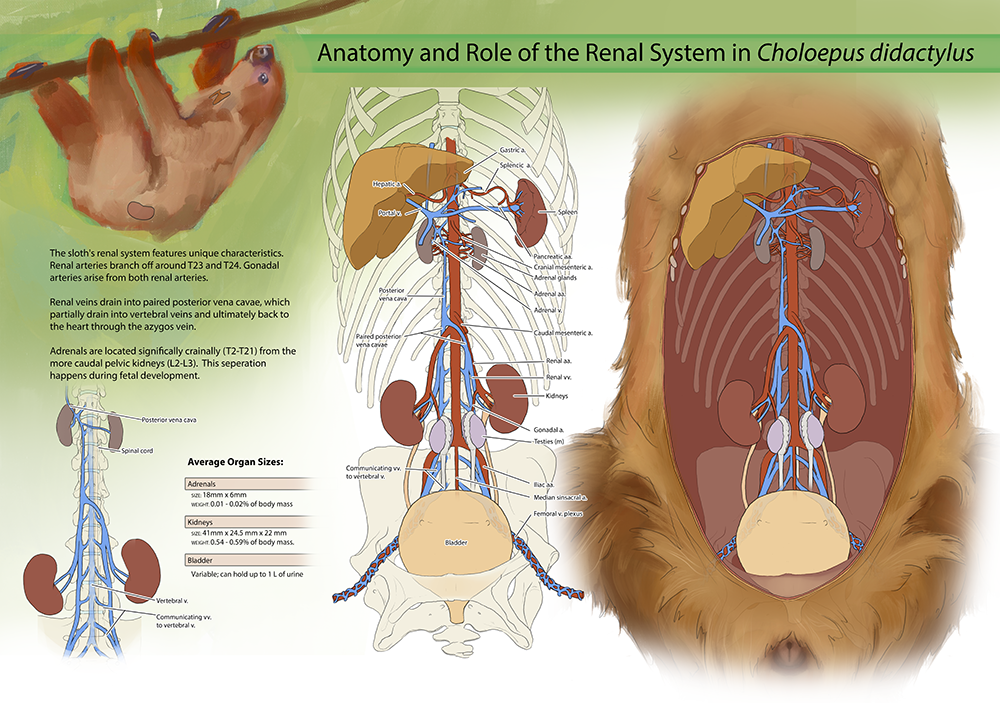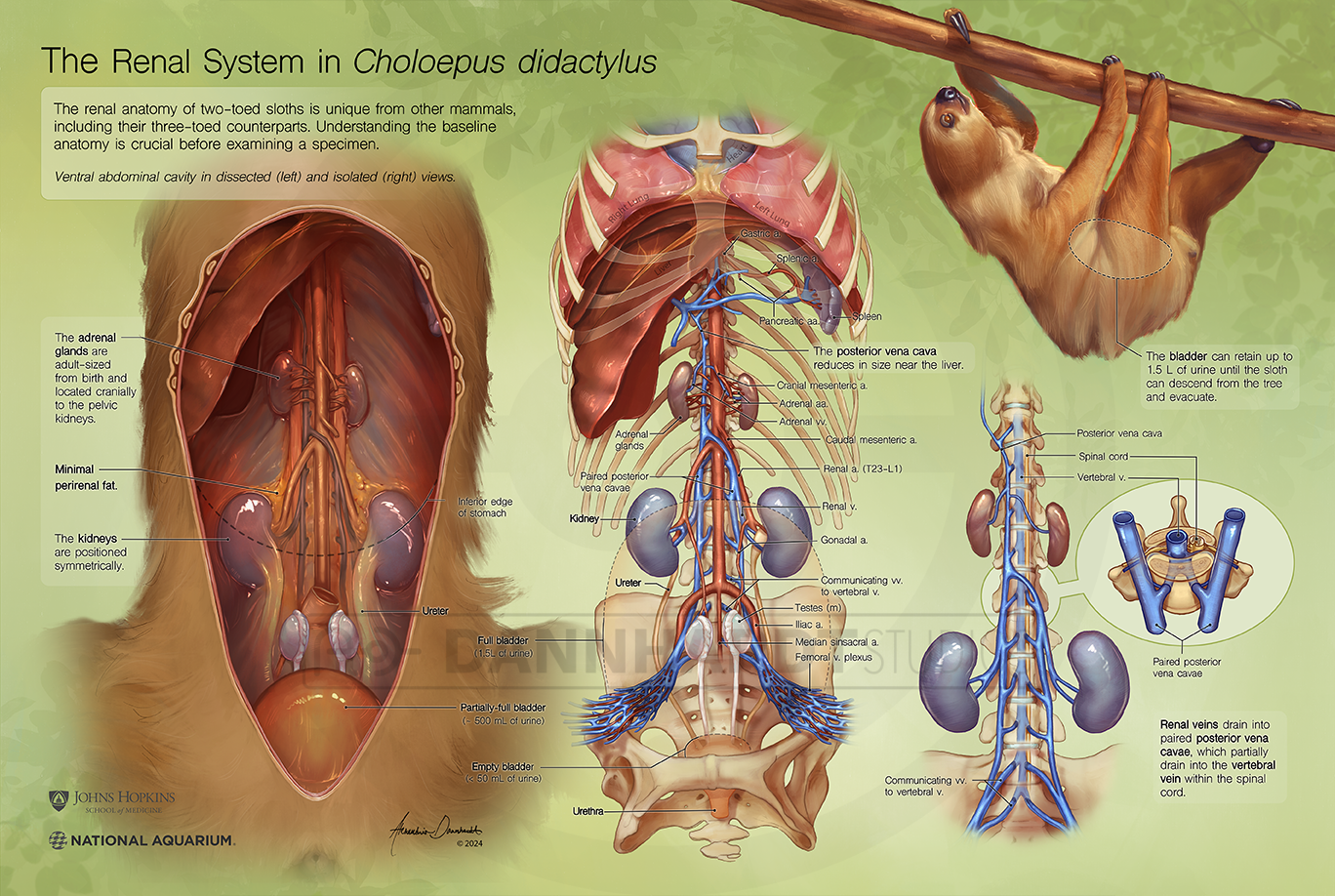The Renal System in two-toed sloths
Client
Debra Dial, National Aquarium, Tim Phelps
Year
2024
Media
Adobe Photoshop, Procreate
Description
Two-toed sloths possess unique morphological traits that may be mistaken for pathology by veterinarians unfamiliar with these animals during surgery or necropsy. This piece depicts the renal system and related anatomy to the two-toed sloth to address the high rate of kidney disease in this species. The renal system has never been illustrated before, and was researched using necropsy photos and measurements from literature.
The piece includes both a dissected view and an isolated view of the anatomy to help veterinary surgeons understand what to expect inside the abdominal cavity, including the position of the kidneys, the size of the adrenal glands, and highly variable bladder size. The drainage of the paired posterior vena cavae into the vertebral veins is also highlighted, as this morphology is unique to sloths.
Diadetic Diagram
One of the more fascinating aspects of the sloth’s unique morphology is how blood is returned to the heart from the lower body. Rather than following a typical venous path, blood from the iliac veins is transported through an intervertebral vein, which drains communication veins that pass through the neural foramina of the lumbar and thoracic vertebrae, and runs alongside the spinal cord. This vein eventually drains into either the azygous or jugular vein.
This unusual venous route causes the posterior vena cava to shrink significantly before reaching the liver, which might seem concerning but is typical in sloths.
Research and Drafting
For this project, I utilized resources provided by the National Aquarium, along with various scientific papers related to the anatomy of the two-toed sloth (Choloepus didactylus), to ensure every detail was accurate. A special thanks to Debra Dial, a sloth expert at the National Aquarium, for her invaluable help in reviewing the anatomical accuracy. Additionally, the paper “Aortic Branches and Rete Mirabile of the Limbs of the Two-Toed Sloth” (DOI: 10.1002/ar.25232) provided critical insights for this work.


Thumbnail
Draft


